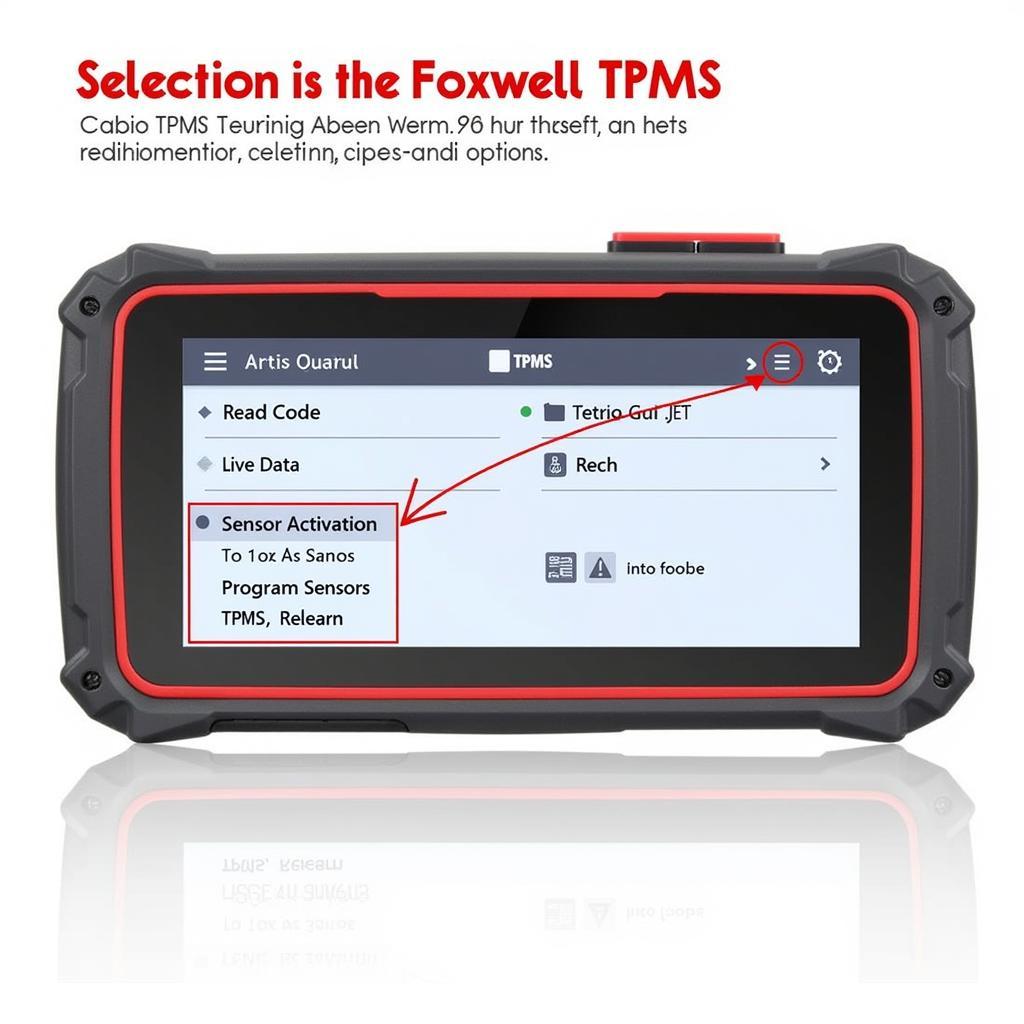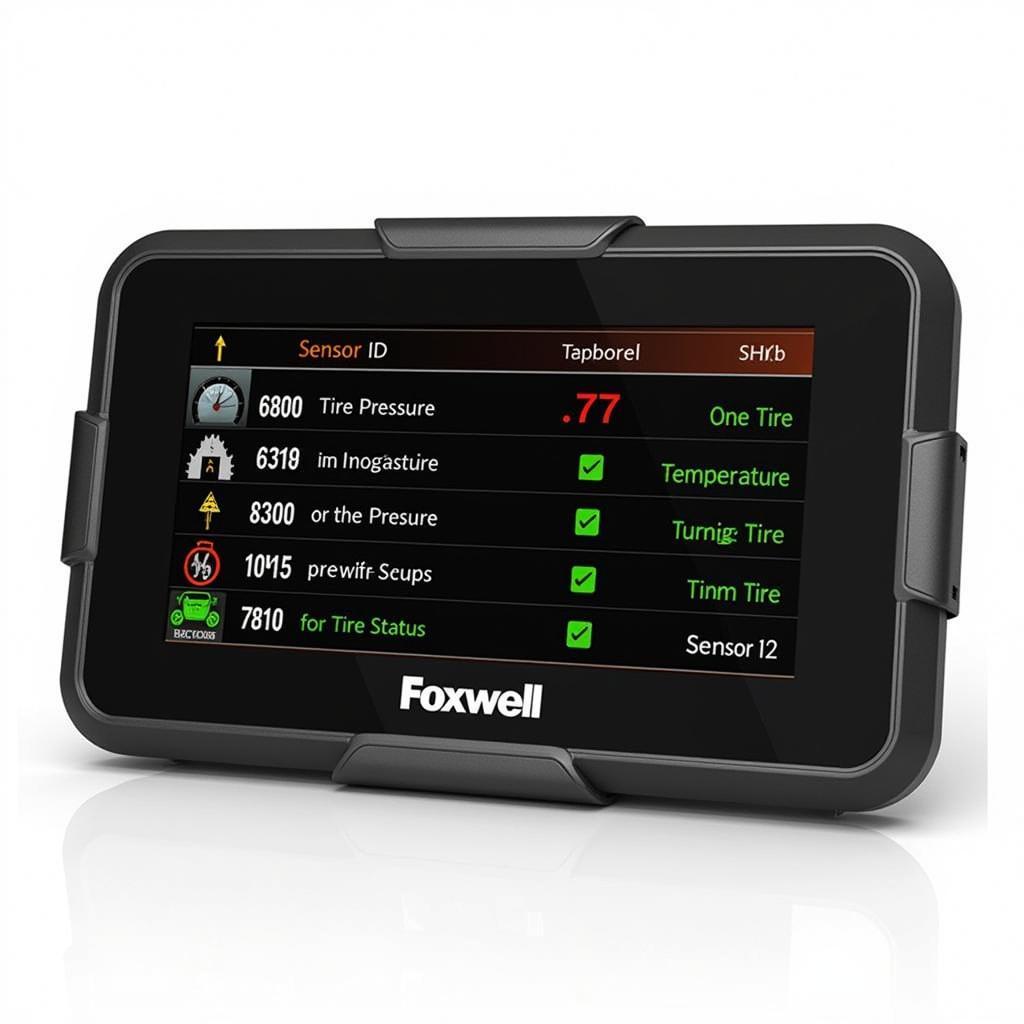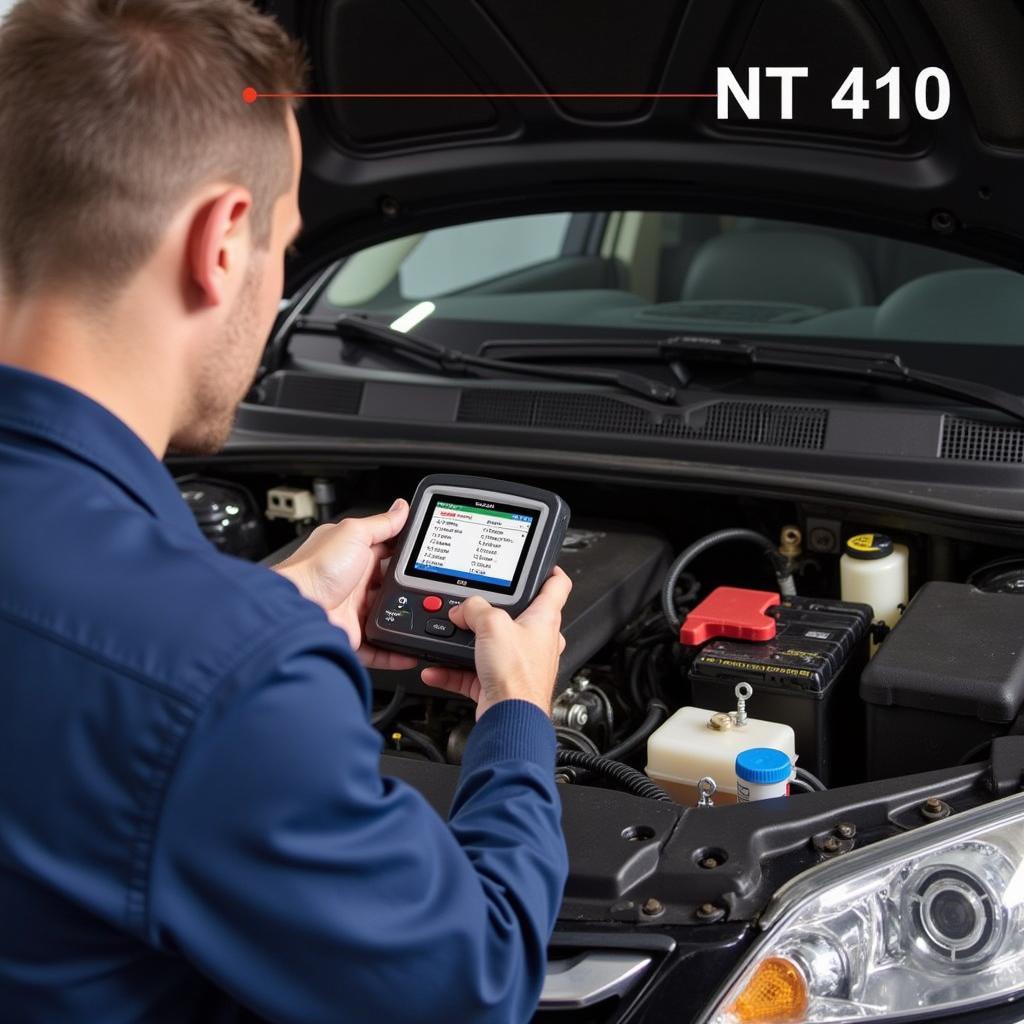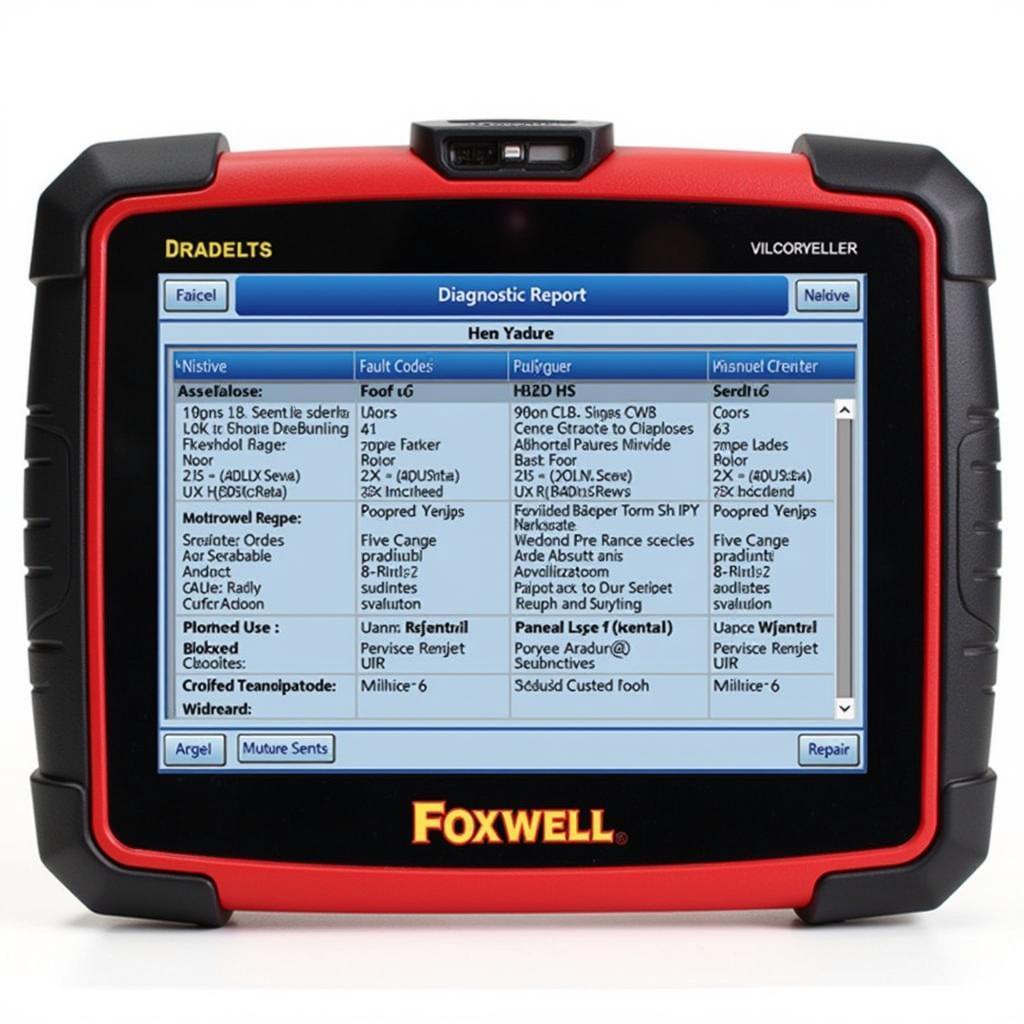The Foxwell NT650 is a powerful and versatile diagnostic tool that can be used to perform a wide range of automotive repairs, including those related to the Tire Pressure Monitoring System (TPMS). Whether you’re a car owner looking to troubleshoot TPMS issues yourself, a garage owner wanting to expand your service offerings, or an automotive technician seeking to enhance your skillset, this comprehensive guide will equip you with the knowledge to effectively use the Foxwell NT650 for all your TPMS needs.
Understanding the Importance of TPMS
Before we delve into the specifics of using the Foxwell NT650, it’s crucial to grasp the importance of a well-functioning TPMS. A vehicle’s TPMS is designed to monitor the air pressure in your tires in real time, alerting you via a dashboard warning light if a tire is significantly under-inflated. Maintaining proper tire pressure is paramount for several reasons:
- Safety: Under-inflated tires are prone to overheating, increasing the risk of a blowout, particularly at high speeds. This poses a significant safety hazard for you and other road users.
- Fuel Efficiency: Driving with under-inflated tires forces your engine to work harder, leading to reduced fuel economy and increased expenses at the pump.
- Tire Longevity: Properly inflated tires wear evenly, extending their lifespan and saving you money in the long run. Conversely, under-inflation causes uneven wear patterns and premature tire replacement.
The Foxwell NT650: Your TPMS Solution
The Foxwell NT650 is equipped with advanced features specifically designed to diagnose and repair TPMS issues. Here’s how this tool can become your go-to for all things TPMS:
- Reading Sensor Data: The NT650 can accurately read and display crucial data from your TPMS sensors, including tire pressure, temperature, sensor ID, battery status, and more.
- Troubleshooting Warning Lights: If your TPMS warning light is illuminated, the NT650 can help you pinpoint the root cause. It identifies which sensor is triggering the alert and provides diagnostic trouble codes (DTCs) for quick and efficient troubleshooting.
- Programming New Sensors: Replacing a TPMS sensor? The NT650 can program new sensors to your vehicle’s ECU, ensuring seamless integration and accurate readings. It supports a wide range of sensor protocols, making it compatible with most car makes and models.
- Performing Relearns: After rotating tires or replacing sensors, a TPMS relearn procedure is often necessary. The NT650 simplifies this process by guiding you through the correct relearn procedure for your specific vehicle, ensuring all sensors are recognized by the TPMS system.
Step-by-Step Guide to Using the Foxwell NT650 for TPMS
Now, let’s dive into a step-by-step guide on how to use the Foxwell NT650 to diagnose and repair TPMS issues:
- Connect the NT650: Power on your vehicle and connect the NT650 to the OBD-II port, typically located under the dashboard on the driver’s side.
- Turn on the NT650: Switch on the NT650 and navigate to the “TPMS” function.
- Select Vehicle Make and Model: Input your vehicle’s specific make, model, and year.
- Choose Desired Function: The NT650 will present you with various TPMS-related options, such as:
- Read Codes: This option retrieves any stored TPMS fault codes, providing insights into the problem.
- Live Data: Access real-time data from your TPMS sensors, including pressure, temperature, and sensor ID.
- Sensor Activation: Use this function to activate individual TPMS sensors, helpful for identifying faulty sensors or during sensor replacement.
- Program Sensors: This option enables you to program new or replacement sensors to your vehicle’s ECU.
- TPMS Relearn: Select this function after rotating tires or replacing sensors to initiate the relearn procedure.
- Follow On-Screen Instructions: The NT650 provides clear, step-by-step instructions on the screen for each selected function.
 Foxwell NT650 TPMS Function
Foxwell NT650 TPMS Function
Tips for Effective TPMS Troubleshooting with the Foxwell NT650
To maximize the effectiveness of your TPMS diagnostics and repairs using the Foxwell NT650, consider these additional tips:
- Regular Updates: Ensure your NT650’s software is updated to the latest version. Updates often include new vehicle coverage, improved functionality, and bug fixes.
- Consult Manufacturer Resources: When programming sensors or performing relearns, it’s always a good practice to refer to your vehicle manufacturer’s service information for model-specific procedures and recommendations.
- Battery Check: If a sensor’s battery is low, it may trigger a TPMS warning. The NT650 can display sensor battery status, allowing you to identify and replace sensors with depleted batteries.
 Foxwell NT650 TPMS Sensor Data
Foxwell NT650 TPMS Sensor Data
Conclusion
The Foxwell NT650 is an invaluable tool for anyone looking to diagnose, repair, or simply understand their vehicle’s TPMS. With its user-friendly interface, comprehensive functionality, and wide vehicle coverage, the NT650 empowers car owners, mechanics, and technicians alike to take control of TPMS maintenance and ensure optimal vehicle safety and performance.
Need assistance with your Foxwell NT650 or have TPMS-related questions? Contact the experts at ScanToolUS. We’re here to help!
Phone: +1 (641) 206-8880
Office: 1615 S Laramie Ave, Cicero, IL 60804, USA
Frequently Asked Questions
1. Can the Foxwell NT650 program all types of TPMS sensors?
The Foxwell NT650 is compatible with a wide range of TPMS sensors, including both original equipment manufacturer (OEM) and aftermarket sensors. However, it’s always recommended to consult the NT650’s compatibility list or contact ScanToolUS to confirm compatibility with your specific vehicle make and model.
2. Do I need special training to use the Foxwell NT650 for TPMS?
The NT650 is designed with user-friendliness in mind. Its intuitive interface and on-screen instructions guide you through each step. However, having a basic understanding of TPMS systems and automotive terminology will enhance your experience.
3. What is a TPMS relearn, and why is it necessary?
A TPMS relearn is a procedure that synchronizes the TPMS sensors with your vehicle’s ECU. This is often required after tire rotations, sensor replacements, or TPMS module resets. The relearn process teaches the ECU the new sensor positions or IDs, ensuring accurate TPMS warnings.
4. Can I use the Foxwell NT650 to check TPMS on other vehicles besides my own?
Yes, the Foxwell NT650 can be used on multiple vehicles. This makes it a versatile tool for DIY enthusiasts and professionals who work on a variety of cars.
5. How often should I check my tire pressure?
It’s generally recommended to check your tire pressure at least once a month, and more frequently during extreme temperature changes. Regularly monitoring your tire pressure promotes safety, fuel efficiency, and extends tire lifespan.



Pingback: Foxwell NT650 TPMS: The Ultimate Guide to Understanding and Using This Powerful Tool - Car Scan Tool